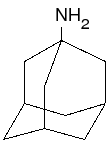BALTIMORE -- Acknowledging that "flu has a huge news factor," Bruce Gellin, M.D., spelled out the federal influenza pandemic preparedness plan at a biodefense research meeting sponsored by the American Society for Microbiology.
The Department of Health and Human Services' draft Pandemic Influenza Response and Preparedness Plan, developed in August 2004, includes influenza control, stockpiling vaccines, developing antiviral drugs and prophylaxis, providing quality medical care, and maintaining community services, said Dr. Gellin, director of the National Vaccine Program Office, a division of HHS. The World Health Organization originally developed pandemic preparedness guidelines in 1999 for other organizations to follow.
"There are a lot of unknowns," said Dr. Gellin. "When will a pandemic occur? How bad will it be? And will there be major social and economic fallout? We need to continue to identify unmet questions."
Improving vaccine preparedness is a major focus of the HHS plan. To that end, Dr. Gellin said the United States must enhance annual influenza vaccine use, ensure a year-round egg supply, increase and diversify U.S. manufacturing capacity, and improve the ability to rapidly develop reference strains.
As for antiviral drugs, the U.S. government currently stockpiles 2 million doses of Tamiflu (oseltamivir) and 4 million doses of Flumadine (rimantadine). He acknowledged the need for a greater stockpile of these drugs, as well as a push for other therapies besides antivirals.
Even in the case of a mild pandemic, Dr. Gellin emphasized the heightened need for inpatient medical services and effective triaging of patients, noting there would be an estimated 25% increase in demand for inpatient beds, ICU beds, and ventilators.
A few key issues remain unresolved, according to Dr. Gellin, including determining priority groups for early vaccine and antiviral use in the event of a pandemic; purchase and distribution of public- and private-sector vaccinations; and legal issues, including indemnification, liability protection, and compensation.
Two other significant issues addressed in the pandemic plan are development of new vaccines and therapeutics.
Richard J. Webby, Ph.D., of St. Jude Children's Hospital in Memphis, pointed out the many considerations for creating a vaccine in response to an emerging influenza pandemic.
"There is no way of accurately predicting what strain it might be; there is enormous diversity of viruses in animal reservoirs, and some viruses are highly pathogenic," he said.
But a procedure called reverse genetics has been significant in Dr. Webby's work at St. Jude's in accelerating the development of vaccines. Reverse genetics begins with a cloned segment of DNA and introduces programmed mutations back into the genome to investigate gene and protein function.
As for antivirals, the existing therapeutics are M2 ion channel inhibitors and neuraminidase inhibitors (NAIs), said Simon P. Tucker, Ph.D., of Biota Holdings Ltd., in Melbourne, Australia.
The M2s are Symmetrel (amantadine) and Flumadine, both of which are dosed at 100 mg twice a day. The NAIs are Relenza (zanamivir) and Tamiflu. Relenza is dosed at 10 mg twice daily and Tamiflu at 75 mg twice daily, said Dr. Tucker.
There are some basic differences between the two drug classes, Dr. Tucker said. M2s are used only for influenza A and have a high clinical resistance; NAIs are effective against both influenza A and B and have a low clinical resistance.
For these reasons, NAIs, particularly Tamiflu, are prescribed more often than M2s, he said. Most prescriptions are written by family physicians; most of the patients are aged 20-59 years, he said.
Dr. Tucker noted that another drug class is under development--long-acting neuraminidase inhibitors (LANIs)--and has exhibited some early success.
One LANI monomer (R-118958) has shown to be more potent and more effective than Relenza, said Dr. Tucker. He noted a few of the advantages to LANIs: onetime-only therapy, once-weekly prophylaxis, and an optimal use for inter-pandemic cases.
Biota Holdings Ltd. was involved in the development of Relenza and is currently developing LANIs under a contract from the National Institutes of Health.
BY DAVID STERNBERG
Contributing Writer
COPYRIGHT 2005 International Medical News Group
COPYRIGHT 2005 Gale Group



